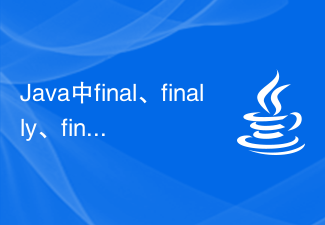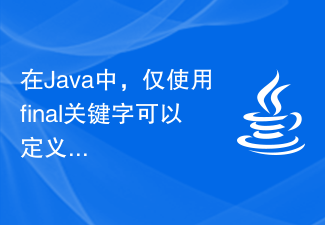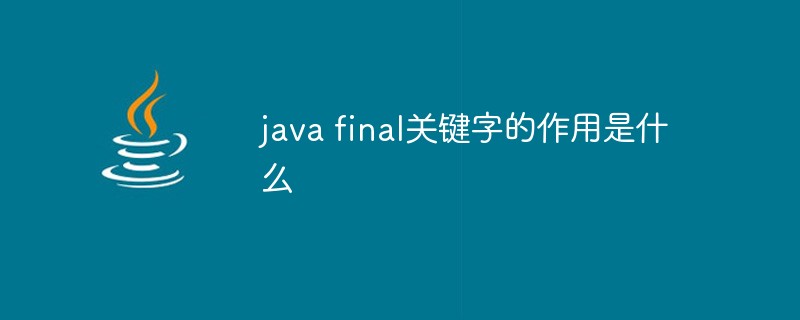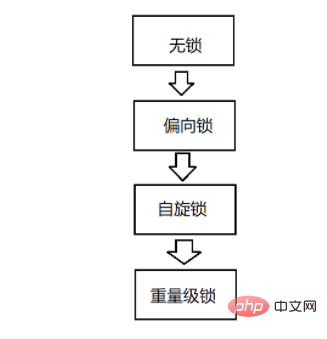
Java provides some other modifiers to provide functionality beyond visibility. These modifiers are called non-access modifiers
- static Members declared as static are common to all instances of the class. Static members are class-level members that are stored in class memory.
- Final This modifier is used to restrict further modifications to a variable, method, or class. The value of a variable declared final cannot be modified once it obtains its value. Final methods cannot be overridden in subclasses, nor can you create subclasses of the Final class.
- AbstractThis modifier can be used with a class or method. You cannot apply this modifier to variables and constructors. Methods declared abstract must be modified in subclasses. You cannot instantiate a class declared abstract.
- SynchronizationThis modifier is used to control access to a specific method or block by multiple threads. Only one thread can enter a method or block declared as synchronized.
- Transient This modifier is used in the serialization process. Variables declared as transient are not serialized during object serialization.
- Volatile The volatile modifier is used in multi-threaded programming. If you declare a field as volatile, it signals to threads that its value must be read from main memory rather than from their own stack. Because volatile fields are common to all threads and will be updated frequently by multiple threads.
- Strictfp This modifier is used for floating point calculations. This keyword ensures that you get the same floating point representation on every platform. This modifier makes floating point variables more consistent across multiple platforms.
The above is the detailed content of How many non-access modifiers are there in Java?. For more information, please follow other related articles on the PHP Chinese website!
 Java中final、finally、finalize的区别Feb 19, 2024 pm 12:16 PM
Java中final、finally、finalize的区别Feb 19, 2024 pm 12:16 PMJava中final、finally、finalize的区别,需要具体代码示例在Java编程中,经常会遇到final、finally、finalize这三个关键词,它们虽然拼写相似,但却有不同的含义和用法。本文将详细解释这三个关键词的区别,同时给出代码示例以帮助读者更好地理解。一、final关键字final关键字可以用于类、方法和变量。它的作用是使被修饰的类
 在Java中,仅使用final关键字可以定义一个常量吗?Sep 20, 2023 pm 04:17 PM
在Java中,仅使用final关键字可以定义一个常量吗?Sep 20, 2023 pm 04:17 PM常量变量是其值固定且程序中只存在一个副本的变量。一旦你声明了一个常量变量并给它赋值,你就不能在整个程序中再次改变它的值。与其他语言不同,Java不直接支持常量。但是,你仍然可以通过声明一个变量为静态和final来创建一个常量。静态-一旦你声明了一个静态变量,它们将在编译时加载到内存中,即只有一个副本可用。Final-一旦你声明了一个final变量,就不能再修改它的值。因此,你可以通过将实例变量声明为静态和final来在Java中创建一个常量。示例 演示classData{&am
 java final关键字的作用是什么Nov 25, 2022 pm 04:26 PM
java final关键字的作用是什么Nov 25, 2022 pm 04:26 PM在java中,final可以用来修饰类、方法和变量。final修饰类,表示该类是无法被任何其他类继承的,意味着此类在一个继承树中是一个叶子类,并且此类的设计已被认为很完美而不需要进行修改或扩展。final修饰类中的方法,表示该类是无法被任何其他类继承的,不可以被重写;也就是把该方法锁定了,以防止继承类对其进行更改。final修饰类中的变量,表示该变量一旦被初始化便不可改变。
 Java中Synchronized的原理和使用场景以及Callable接口的使用方法及区别分析Apr 21, 2023 am 08:04 AM
Java中Synchronized的原理和使用场景以及Callable接口的使用方法及区别分析Apr 21, 2023 am 08:04 AM一、基本特点1.开始时是乐观锁,如果锁冲突频繁,就转换为悲观锁.2.开始是轻量级锁实现,如果锁被持有的时间较长,就转换成重量级锁.3.实现轻量级锁的时候大概率用到的自旋锁策略4.是一种不公平锁5.是一种可重入锁6.不是读写锁二、加锁工作过程JVM将synchronized锁分为无锁、偏向锁、轻量级锁、重量级锁状态。会根据情况,进行依次升级。偏向锁假设男主是一个锁,女主是一个线程.如果只有这一个线程来使用这个锁,那么男主女主即使不领证结婚(避免了高成本操作),也可以一直幸福的生活下去.但是女配出现
 c语言static的作用和用法是什么Jan 31, 2024 pm 01:59 PM
c语言static的作用和用法是什么Jan 31, 2024 pm 01:59 PMc语言static的作用和用法:1、变量作用域;2、生命周期;3、函数内部;4、修饰全局变量;5、修饰函数;6、其他用途;详细介绍:1、变量作用域,当一个变量前有static关键字,那么这个变量的作用域被限制在声明它的文件内,也就是说,这个变量是“文件级作用域”,这对于防止变量的“重复定义”问题很有用;2、生命周期,静态变量在程序开始执行时初始化一次,并在程序结束时销毁等等。
 Java中的static、this、super、final怎么使用Apr 18, 2023 pm 03:40 PM
Java中的static、this、super、final怎么使用Apr 18, 2023 pm 03:40 PM一、static 请先看下面这段程序:publicclassHello{publicstaticvoidmain(String[]args){//(1)System.out.println("Hello,world!");//(2)}}看过这段程序,对于大多数学过Java的从来说,都不陌生。即使没有学过Java,而学过其它的高级语言,例如C,那你也应该能看懂这段代码的意思。它只是简单的输出“Hello,world”,一点别的用处都没有,然而,它却展示了static关键字的主
 Java关键字synchronized原理与锁的状态实例分析May 11, 2023 pm 03:25 PM
Java关键字synchronized原理与锁的状态实例分析May 11, 2023 pm 03:25 PM一、Java中锁的概念自旋锁:是指当一个线程获取锁的时候,如果锁已经被其它线程获取,那么该线程将循环等待,然后不断的判断锁是否能被成功获取,直到获取到锁才会退出循环。乐观锁:假定没有冲突,在修改数据时如果发现数据和之前获取的不一致,则读最新数据,重试修改。悲观锁:假定会发生并发冲突,同步所有对数据的相关操作,从读数据就开始上锁。独享锁(写):给资源加上写锁,线程可以修改资源,其它线程不能再加锁(单写)。共享锁(读):给资源加上读锁后只能读不能修改,其它线程也只能加读锁,不能加写锁(多度)。看成S
 C语言中static关键字的实际应用场景及使用技巧Feb 21, 2024 pm 07:21 PM
C语言中static关键字的实际应用场景及使用技巧Feb 21, 2024 pm 07:21 PMC语言中static关键字的实际应用场景及使用技巧一、概述static是C语言中的一个关键字,用于修饰变量和函数。它的作用是改变其在程序运行过程中的生命周期和可见性,使得变量和函数具有静态的特性。本文将介绍static关键字的实际应用场景及使用技巧,并通过具体的代码示例进行说明。二、静态变量延长变量的生命周期使用static关键字修饰局部变量可以将其生命周期


Hot AI Tools

Undresser.AI Undress
AI-powered app for creating realistic nude photos

AI Clothes Remover
Online AI tool for removing clothes from photos.

Undress AI Tool
Undress images for free

Clothoff.io
AI clothes remover

AI Hentai Generator
Generate AI Hentai for free.

Hot Article

Hot Tools

mPDF
mPDF is a PHP library that can generate PDF files from UTF-8 encoded HTML. The original author, Ian Back, wrote mPDF to output PDF files "on the fly" from his website and handle different languages. It is slower than original scripts like HTML2FPDF and produces larger files when using Unicode fonts, but supports CSS styles etc. and has a lot of enhancements. Supports almost all languages, including RTL (Arabic and Hebrew) and CJK (Chinese, Japanese and Korean). Supports nested block-level elements (such as P, DIV),

Notepad++7.3.1
Easy-to-use and free code editor

SAP NetWeaver Server Adapter for Eclipse
Integrate Eclipse with SAP NetWeaver application server.

VSCode Windows 64-bit Download
A free and powerful IDE editor launched by Microsoft

DVWA
Damn Vulnerable Web App (DVWA) is a PHP/MySQL web application that is very vulnerable. Its main goals are to be an aid for security professionals to test their skills and tools in a legal environment, to help web developers better understand the process of securing web applications, and to help teachers/students teach/learn in a classroom environment Web application security. The goal of DVWA is to practice some of the most common web vulnerabilities through a simple and straightforward interface, with varying degrees of difficulty. Please note that this software






